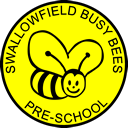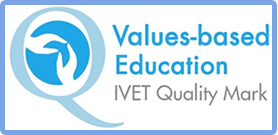Maths
At Swallowfield Primary we teach mathematics for mastery, an engaging and accessible style of mathematics teaching, inspired by Singapore and Shanghai. Our approach enhances mathematical understanding, enjoyment and achievement for every child.
Children are encouraged to physically represent mathematical concepts. Objects and pictures are used to demonstrate and visualise abstract ideas, alongside numbers and symbols.
Mathematical concepts are explored in a variety of representations and problem-solving contexts to give pupils a richer and deeper learning experience.
Rebecca Cresswell- Maths Leader
What is teaching for mastery?
Since mastery is what we want pupils to acquire (or go on acquiring), rather than teachers to demonstrate, we use the phrase ‘teaching for mastery’ to describe the range of elements of classroom practice and school organisation that combine to give pupils the best chances of mastering mathematics.
And mastering maths means acquiring a deep, long-term, secure and adaptable understanding of the subject. At any one point in a pupil’s journey through school, achieving mastery is taken to mean acquiring a solid enough understanding of the maths that’s been taught to enable him/her move on to more advanced material.
What will I see in Maths lessons at Swallowfield Primary?
Whole class together – we teach mathematics to whole classes and do not label children. Lessons are planned based on formative assessment of what pupils already know and we include all children in learning mathematical concepts. At the planning stage, teachers consider the scaffolding that may be required for children struggling to grasp concepts in the lesson and suitable challenge questions for those who may grasp the concepts rapidly.
Longer but deeper – in order to ensure children have a secure and deep understanding of the content taught, our plans have been adjusted to allow longer on topics and we move more slowly through the curriculum. Lessons are based on Maths No Problem text book progression, and supplemented with other resources such as The NCETM and White Rose Maths. Teachers adapt each lesson to meet the needs of their children and add extra questioning / tasks which will allow children to learn the content more deeply. The learning will focus on one key conceptual idea and connections are made across mathematical topics.
Key learning points are identified during planning and a clear journey through the maths developed.
Questions will probe pupil understanding throughout and responses are expected in full sentences, using precise mathematical vocabulary.
Fluency – there is a whole school focus on developing an instant recall of key facts, such as number bonds, using maths apps, times tables and unit + unit addition facts.
Lesson Structure
1. Explore – instead of ‘Let me teach you…’ or giving a learning objective as a starting point, children are encouraged to explore a problem themselves to see what they already know.
Problems are often set in real life contexts – carefully chosen practical resources and pictorial representations are used to explore concepts. These pictorial representations will appear in books as children show their understanding, rather than answers to a series of calculations. The use of practical resources, pictorial representations and recording takes place in every lesson.
2. Structure – the teacher will organise the findings of the exploration, compare strategies and guide toward the most efficient strategy (or the one being learnt that day).
Step by step approach – journey through the mathematics through small carefully crafted steps to support deep understanding.
Questions to challenge thinking – teachers use questioning throughout every lesson to check understanding – a variety of questions are used, but you will hear the same ones being repeated: How do you know? Can you prove it? Are you sure? Can you represent it another way? What’s the value? What’s the same/different about? Can you explain that? What does your partner think? Can you imagine?
3. Reflect – Pupils reflect upon their learning with their talk partner and use manipulatives to develop their understanding further. Pupils have opportunities to talk to their partners and explain/clarify their thinking. There will be more talking and less recording in books. We do not want children to attempt independent recording until we believe they are secure with the concept. We do not want them to practise errors.
Break in the learning for possible Rapid intervention (‘Keep Up Not Catch Up’ ethos) – new learning is built upon previous understanding, so in order for learning to progress and to keep the class together pupils need to be supported to keep up and areas of difficulty must be dealt with as and when they occur. We do this through same day interventions of 10 – 15 minutes after the Reflect section or later in the day. In addition, we still run intervention sessions outside of the maths lesson for some targeted children.
4. Practise-Independent tasks – recording the learning – not just pages of similar calculations –maths books are used.
Teaching for Mastery Key Features
Whole School Maths Progression
https://www.sats-papers.co.uk/
Overview of approaches by Year Group
Maths Meeting for Parents-Addition and Subtraction
Maths Meeting for Parents-Multiplication and Division











